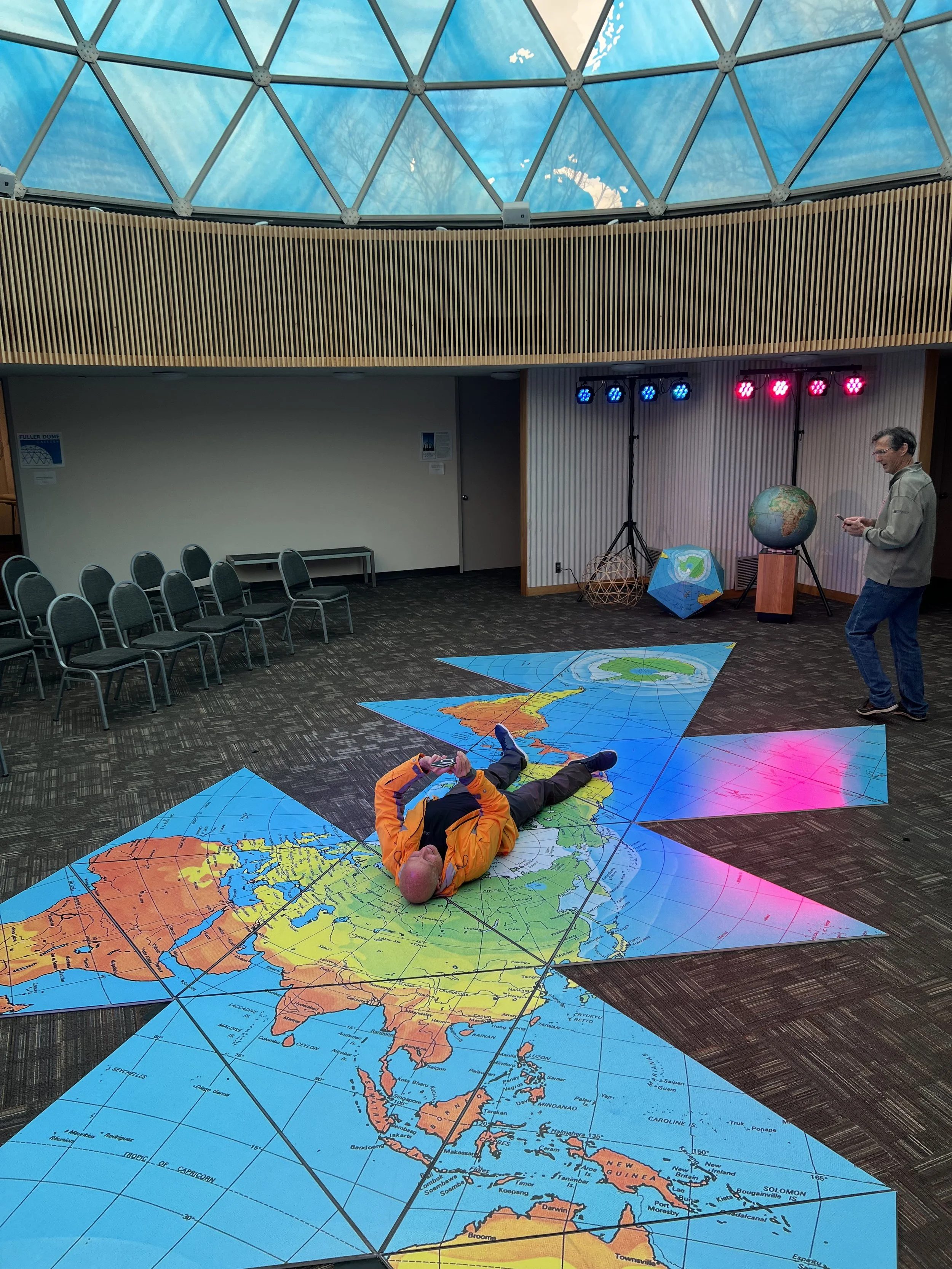Fuller Dome visitor atop Fuller’s Dymaxion Map under the miniature-earth dome.
The Fuller Dome as Extension of your Classroom:
Geography - Buckminster Fuller's ideas offer a framework for a global, interconnected perspective on the world. His tools, like the Dymaxion map and Geoscope, align with the geographic approach to data visualization and analysis. His emphasis on sustainability and resource management resonates with crucial areas of geographic study. Engaging with Fuller's work can help geography students gain a deeper understanding of global challenges and opportunities, which could lead to innovative solutions for a better future.
A Global Perspective:
Spaceship Earth: Fuller viewed Earth as "Spaceship Earth," emphasizing the interconnectedness of all living things and the planet's finite resources. This aligns with geography's focus on understanding global systems and how human actions affect the environment.
"Whole World" View: Fuller argued for a holistic approach to global problems, shifting away from a "local focus hocus pocus". Geography, especially at the college level, encourages consideration of global interconnectedness and the impact of local actions on a larger scale.
Visualizing and Analyzing Global Issues:
Dymaxion Map: Fuller's Dymaxion Map was designed to provide a more accurate representation of the Earth's landmasses and oceans, minimizing distortion compared to traditional maps like the Mercator projection. This aids in visualizing accurate global information like resource distribution and human migration patterns. Geography uses various map projections and data visualization techniques to analyze and understand complex global issues.
Geoscope: Fuller envisioned the Geoscope as a tool for global visualization, a reverse planetarium allowing for the real-time display and analysis of global data. This aligns with modern geographic data analysis tools like Google Earth and Geographic Information Systems (GIS), which allow for the visualization and analysis of diverse geographic information.
Resource Management and Sustainability:
"Doing More with Less": Fuller's philosophy of "doing more with less" is a guiding principle for sustainable design and resource management. Geography, especially environmental geography, explores sustainable practices, resource availability, and the equitable distribution of resources.
World Game: Fuller's World Game was designed as an educational simulation to address global challenges like resource distribution and population growth. This resonates with college-level geography courses that utilize simulations and games to teach about resource management, global logistics, and potential solutions to environmental and societal issues.

